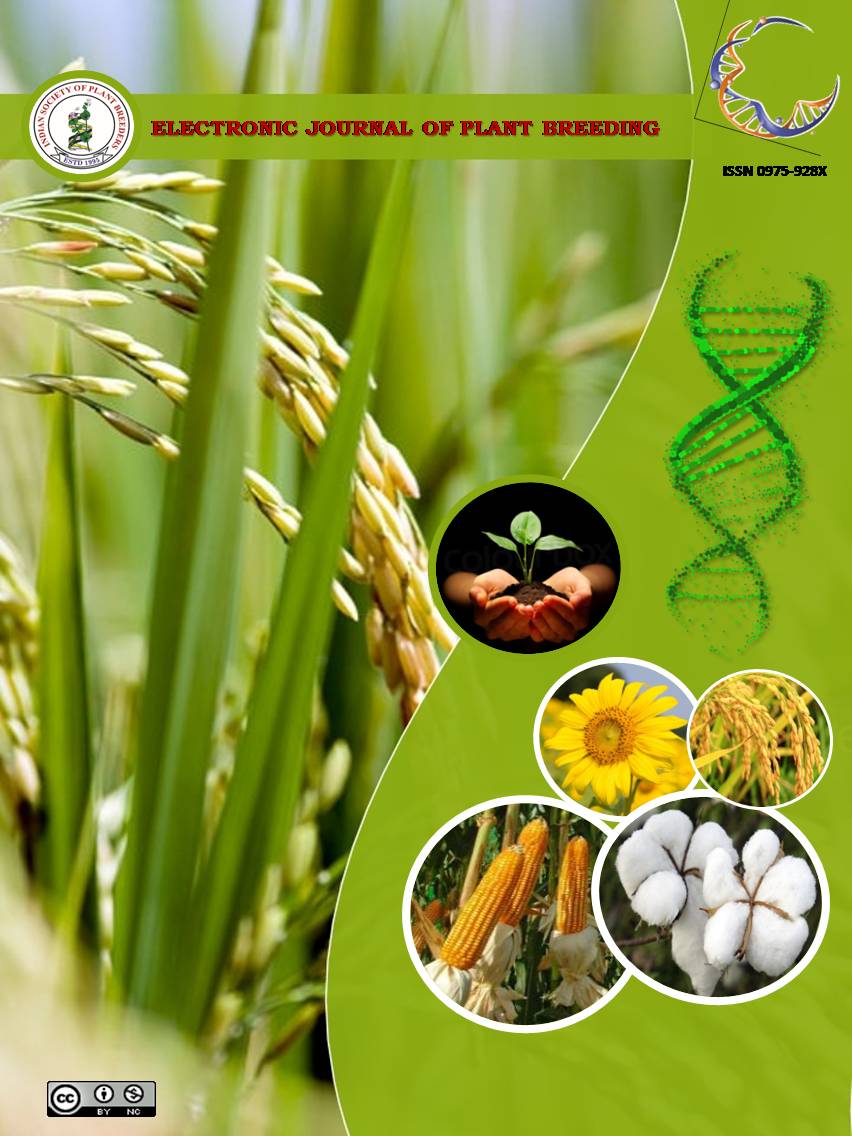Analysis of induced genetic variability for morphological and floral characters with male sterility in sesame (Sesamum indicum L.)
Abstract
Male sterility can be useful to obtain high yielding sesame hybrids with reduced cost and labour. It can be induced artificially into the released cultivars by using chemical mutagens. Hence the present study was undertaken to induce male sterility in a released sesame genotype cv. B 67 by three different concentrations of Ethyl methane sulphonate (0.25%, 0.50% and 0.75% ) and Nitroso-guanidine (0.01%, 0.02% and 0.04%). The treated seeds were sown to obtain M1 generation of mutants. This population was further advanced by progeny row method to M4 generation where thirty five stable mutants along with parent were screened for abnormal phenotypic and floral characters. The observation indicated generation of large variability for seven morphological characters and five floral characters among the mutants while male sterility could be achieved only up to 56.79%. These male sterile plants were characterized by low plant height, polypetalous and irregular or cleistogamous flowers. The present study implies that the above chemical mutagens can be used to develop useful male sterile mutants in sesame.

It is certified that:
- The corresponding author is fully responsible for any disputes arising due to the publication of his/her manuscript.
- The article has been seen by all the authors who are satisfied with its form and content.
- The sequence of names of authors in the by-line is as per their relative contribution to this experiment, giving due credit to all scientists who made notable contribution to it.
- All the authors fully understand that inclusion of any other co-authors or exclusion of any co-authors is not possible once the article has been submitted to the journal.
- The corresponding author takes full responsibility for this article.
- The address of the organization where the research was conducted is given.
- The article is exclusive for this journal, and the results reported here have not been sent (and will not be sent during its consideration by this journal) for publication in any other journal.
- Authors agree to abide by the objective comments of referees and do agree to modify the article into a short note as per the recommendation, for publication in the Electronic Journal of Plant Breeding.
- If published in Electronic Journal of Plant Breeding, the copyright of this article would vest with the Indian Society of Plant Breeders, who will have the right to enter into any agreement with any organization in India or abroad engaged in reprography, photocopying, storage and dissemination of information contained in it, and neither we nor our legal heirs will have any claims on royalty.


